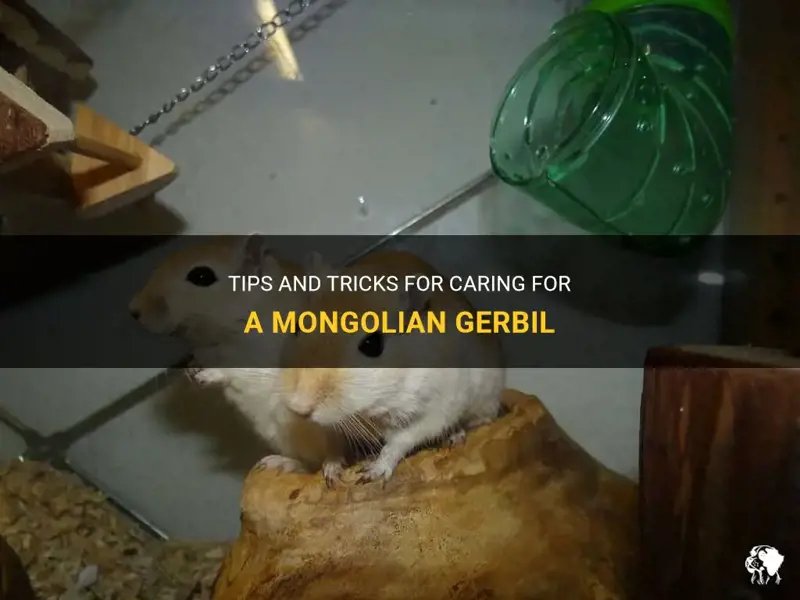
If you’re considering welcoming a Mongolian gerbil into your home, you’ll need to know a few essentials about their care. This includes understanding their diet, proper housing, and how to keep them mentally stimulated. By giving them the right environment and nutrition, you’ll not only help them thrive but also enjoy the delightful quirks of their behavior. Let’s dive in!
Understanding the Dietary Needs of Mongolian Gerbils
You might be surprised to know that a gerbil’s diet is more than just a handful of seeds. In the wild, these critters feast on grains, seeds, and even some vegetables. So, when caring for a Mongolian gerbil, it’s crucial to mimic their natural diet as much as possible. A good starting point is a commercial gerbil food that’s high in fiber. Look for pellets that prioritize whole grains over fillers.
But here’s the thing: variety is key! Throwing in occasional fresh veggies can spice things up. Think carrots, broccoli, or even a bit of cucumber as treats. Just remember to introduce new foods slowly to avoid stomach upset. Gerbils have sensitive stomachs, and sudden changes can lead to issues. Always wash and chop the veggies into small, manageable pieces.
Additionally, fresh water should always be available. A small water bottle with a sipper tube works best. This helps keep the water clean and prevents spills. Keep an eye on the water level daily; it’s easy to overlook, but it’s super important for your little buddy’s health.
Choosing the Right Housing for Your Gerbil
Now that we’ve got their diet covered, let’s talk about where your gerbil will live. Choosing the right habitat is like picking the perfect home for a new roommate. You want it safe, spacious, and comfortable! A good rule of thumb is to aim for a cage that’s at least 24 inches long, 12 inches wide, and 12 inches high. You’ll find many different types of cages out there, but a glass aquarium or a wire cage with solid floors is generally the best.
Make sure to include plenty of bedding to allow for burrowing, since gerbils are natural diggers. Aspen shavings or paper-based bedding are great options. Avoid cedar or pine shavings, as they can be harmful to their respiratory systems. It’s important to keep their space clean too; spot clean daily and do a full bedding change at least once a week.
You might be wondering how to decorate their space. Adding tunnels, chew toys, and safe hiding spots can enhance their environment. Cardboard tubes or wooden ladders can provide fun climbing opportunities, while small hideaways give them a cozy place to retreat when they need a break from the action.
Creating a Stimulating Environment
Gerbils are playful and intelligent creatures, so keeping them entertained is essential. Think of them as tiny athletes—just like you need to stay active, they do too! Without proper stimulation, they might become bored or stressed. Incorporate various toys and activities into their habitat to keep their minds sharp.
You can offer them chew toys made from untreated wood or cardboard. This not only satisfies their instinct to chew but also keeps their teeth healthy. Regularly rotate their toys to maintain novelty and encourage exploration. You might even consider setting up a small playpen outside their cage for supervised playtime.
Interactive toys that require problem-solving can also be a hit. For example, puzzle feeders are great. They allow your gerbil to work for their food, keeping them engaged and satisfied. Just remember to supervise them during playtime outside their cage to keep them safe and sound.
Socialization and Handling
Caring for a Mongolian gerbil also means bonding with them. When they first come home, give them time to settle in. They may feel shy or nervous at first, which is completely normal. Start by spending time near their cage to get them used to your presence. You might be surprised by how curious these little guys can be!
Once they seem comfortable, you can gently start handling them. Always scoop them up from underneath rather than grabbing them from above. This makes them feel safer, like a little hug! Place them in the palm of your hand, and let them explore. Keep these interactions short at first, gradually increasing the time as they become more comfortable with you.
Here’s a tip: try offering them a small treat while you hold them. This helps create positive associations with your presence. Over time, you’ll build trust, and soon they’ll be excited to see you!
Common Health Concerns
Even the happiest gerbils can face health issues, so it’s important to keep an eye out. Knowing the warning signs can help you catch any problems early. Common issues include wet tail, which is often caused by stress or diet changes, and respiratory infections, typically linked to poor bedding or drafts.
Look for signs like lethargy, changes in eating habits, or any unusual behavior. If you notice anything off, consult a vet who’s familiar with small animals. Regular check-ups can help catch potential problems before they escalate.
Additionally, provide them with a clean environment, a balanced diet, and ample enrichment to keep their immune systems strong. Remember: a happy gerbil is a healthy gerbil!
Final Thoughts on Gerbil Care
Caring for a Mongolian gerbil can be an enriching experience, filled with playful moments and furry companionship. By focusing on their diet, housing, and enrichment, you’re setting the stage for a happy and healthy life for your pet. Remember, these little creatures rely on you for their well-being, so take the time to learn about their needs.
Whether you’re marveling at their burrowing skills or laughing at their playful antics, every moment spent with your gerbil can deepen your bond. So go ahead—embrace the joys of gerbil care and watch your tiny friend thrive in its little world!

